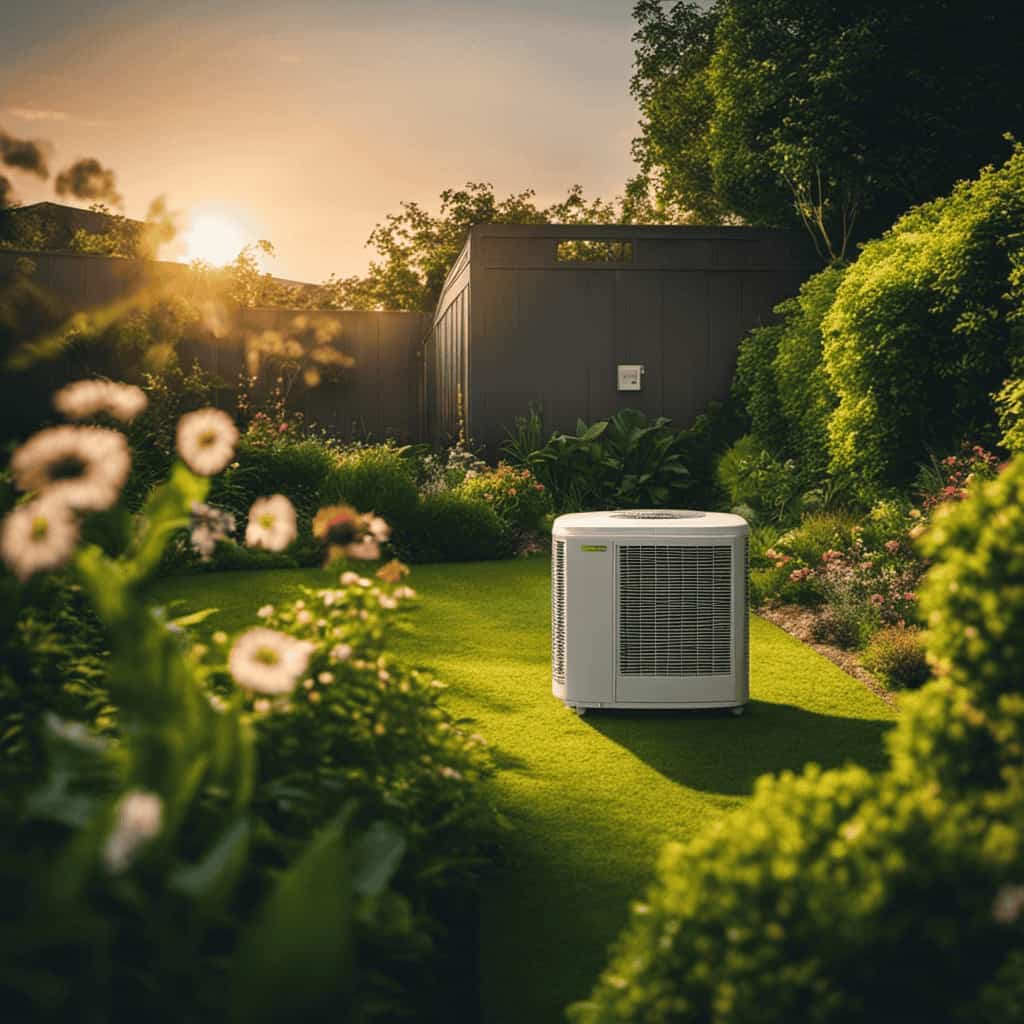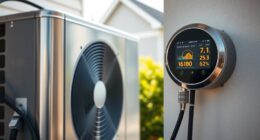We have put together a comprehensive guide from experts to assist you in keeping your renewable energy heat pump in optimal condition.
In just 8 essential steps, you’ll learn everything you need to know to ensure optimal performance and maximum energy efficiency.
From regular maintenance and filter cleaning to adjusting refrigerant levels and calibrating thermostat settings, we’ve got you covered.
Don’t let complex issues get you down – we’ll also show you when it’s time to call in the professionals.
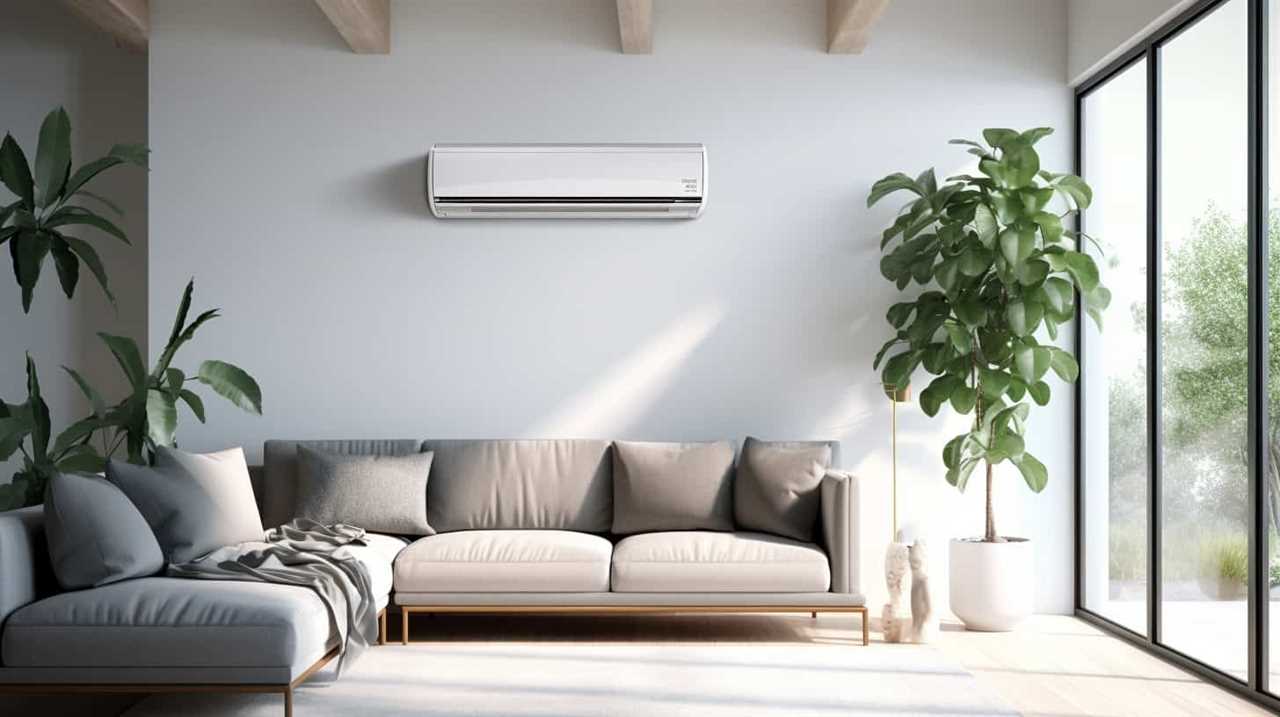
Let’s dive in and revolutionize your heat pump upkeep!
Key Takeaways
- Regular inspections and maintenance are crucial for identifying potential issues early on and ensuring optimal efficiency.
- Cleaning and replacing air filters regularly improves airflow and maintains efficiency.
- Checking and adjusting refrigerant levels is essential for maintaining optimum heat pump performance and preventing leaks.
- Seek professional assistance for complex issues and repairs that require specialized knowledge and skills.
Understanding the Basics of Renewable Energy Heat Pumps
What are the key components of renewable energy heat pumps and how do they work?
Renewable energy heat pump technology is an innovative and efficient way to heat and cool buildings while reducing carbon emissions. These heat pumps consist of three main components: the evaporator, the compressor, and the condenser.
The evaporator absorbs heat from the surrounding environment, such as the air or the ground. The compressor then increases the temperature and pressure of the absorbed heat, before transferring it to the condenser. The condenser releases the heat into the building, providing warmth.
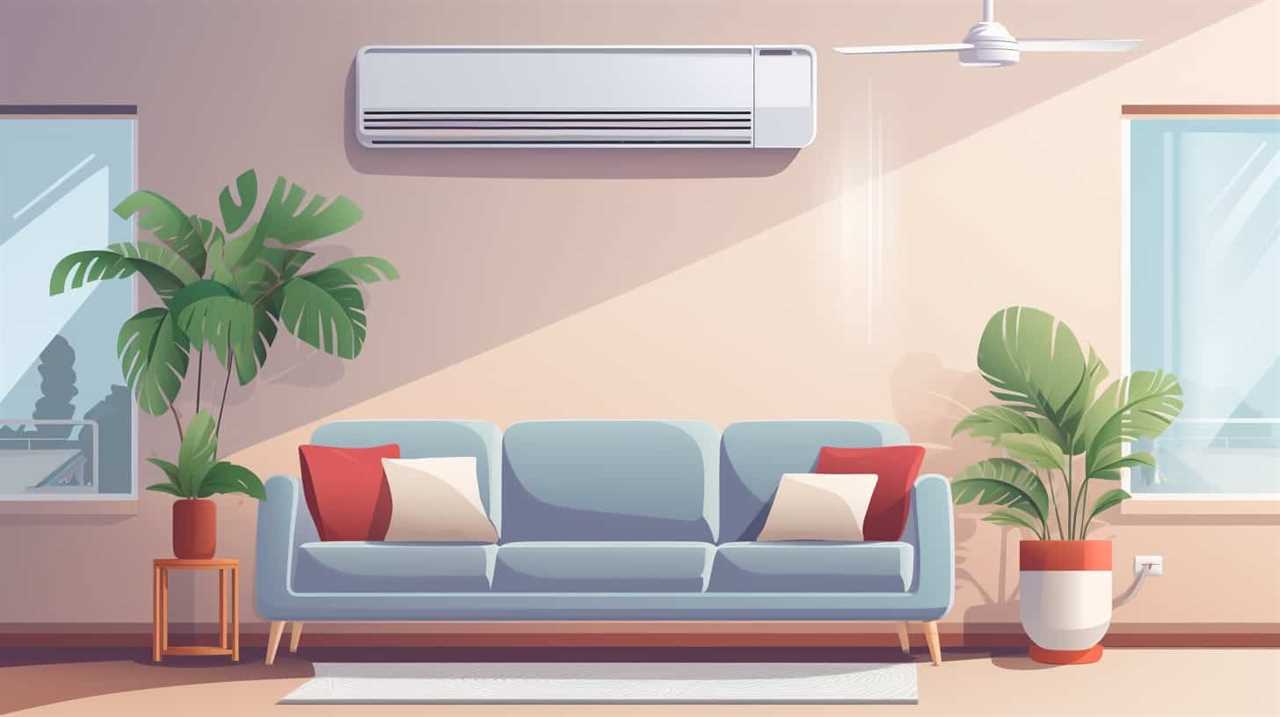
In reverse, during cooling mode, the process is reversed, with the heat pump extracting heat from the building and releasing it outside.
The benefits of renewable energy heat pumps are numerous, including reduced energy consumption, lower utility bills, and a smaller carbon footprint. Understanding the basics of renewable energy heat pumps is crucial for conducting regular inspections and maintenance to ensure optimal performance and efficiency.
Conducting Regular Inspections and Maintenance
To ensure optimal performance and efficiency, we should regularly conduct inspections and maintenance on our renewable energy heat pumps. Conducting regular inspections allows us to identify any potential issues or malfunctions early on, preventing major breakdowns and costly repairs.
During these inspections, it’s important to check for any signs of wear and tear, such as leaks, loose connections, or damaged components.
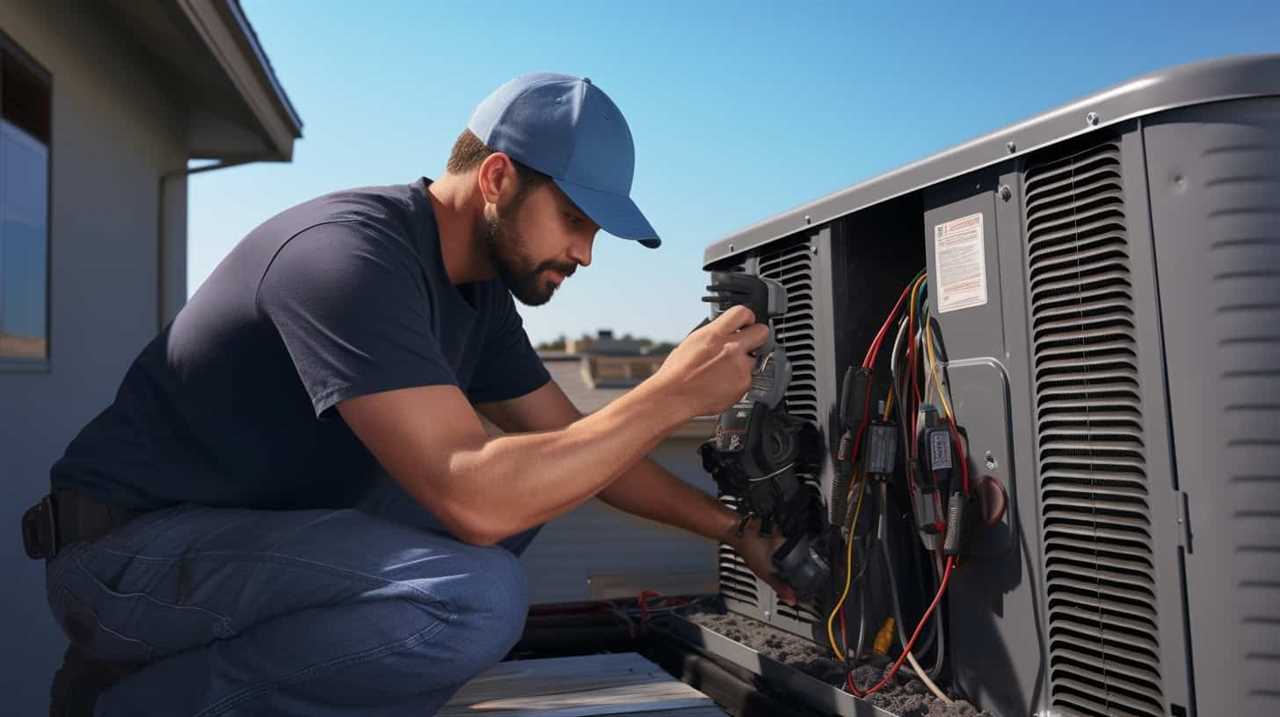
Additionally, scheduling maintenance at regular intervals ensures that the heat pump is operating at its highest efficiency levels. This includes tasks such as cleaning the filters, lubricating moving parts, and checking the refrigerant levels.
Cleaning and Changing Air Filters
We should regularly clean and change our air filters to ensure optimal performance and efficiency of our renewable energy heat pumps. Cleaning the air filters helps remove dust, debris, and other particles that can accumulate over time, reducing the airflow and efficiency of the heat pump. Filter replacement is also crucial as old filters can become clogged and restrict the airflow, causing the heat pump to work harder and consume more energy. To clean the air filters, gently vacuum them or wash them with mild soap and water. It is recommended to clean the filters every 1-2 months, depending on the usage and air quality. Filter replacement should be done every 6-12 months to maintain the heat pump’s efficiency.
| Cleaning Technique | Frequency | Benefits |
|---|---|---|
| Vacuuming | 1-2 months | Removes dust and debris, improves airflow |
| Washing with soap | 1-2 months | Cleans filters effectively, maintains efficiency |
| Filter replacement | 6-12 months | Ensures optimal performance, reduces energy consumption |
Checking and Adjusting Refrigerant Levels
When it comes to maintaining the optimum performance of a renewable energy heat pump, checking and adjusting refrigerant levels is essential.
There are a few key points to keep in mind when it comes to this aspect of upkeep.

First, ensuring refrigerant efficiency is crucial for the overall efficiency of the heat pump system.
Second, taking steps to prevent refrigerant leaks is important to minimize potential damage and maintain system integrity.
Refrigerant Efficiency Tips
Maintaining optimal refrigerant levels is crucial for ensuring the efficiency of our heat pumps. Regularly checking and adjusting refrigerant levels can greatly contribute to energy efficiency improvements. When the refrigerant levels are too low, the heat pump may not be able to effectively transfer heat, leading to decreased performance and higher energy consumption.
On the other hand, if the refrigerant levels are too high, it can also negatively impact the heat pump’s efficiency. By monitoring and adjusting the refrigerant levels, we can ensure that the heat pump operates at its peak performance, reducing energy waste and maximizing its potential. However, it’s important to note that refrigerant replacement should only be done by qualified professionals to prevent any potential damage to the system.

By implementing these refrigerant efficiency tips, we can optimize the performance of our heat pumps and achieve greater energy savings.
Moving forward, let’s now delve into the importance of preventing refrigerant leaks.
Preventing Refrigerant Leaks
To prevent refrigerant leaks, regularly check and adjust the refrigerant levels of our heat pumps. Proper maintenance is essential for refrigerant leak prevention and early detection.
By keeping a close eye on the refrigerant levels, we can ensure that the heat pumps are operating at their optimal efficiency and minimize the risk of leaks. Regularly inspecting the heat pump’s refrigerant lines and connections for any signs of wear or damage is also crucial.
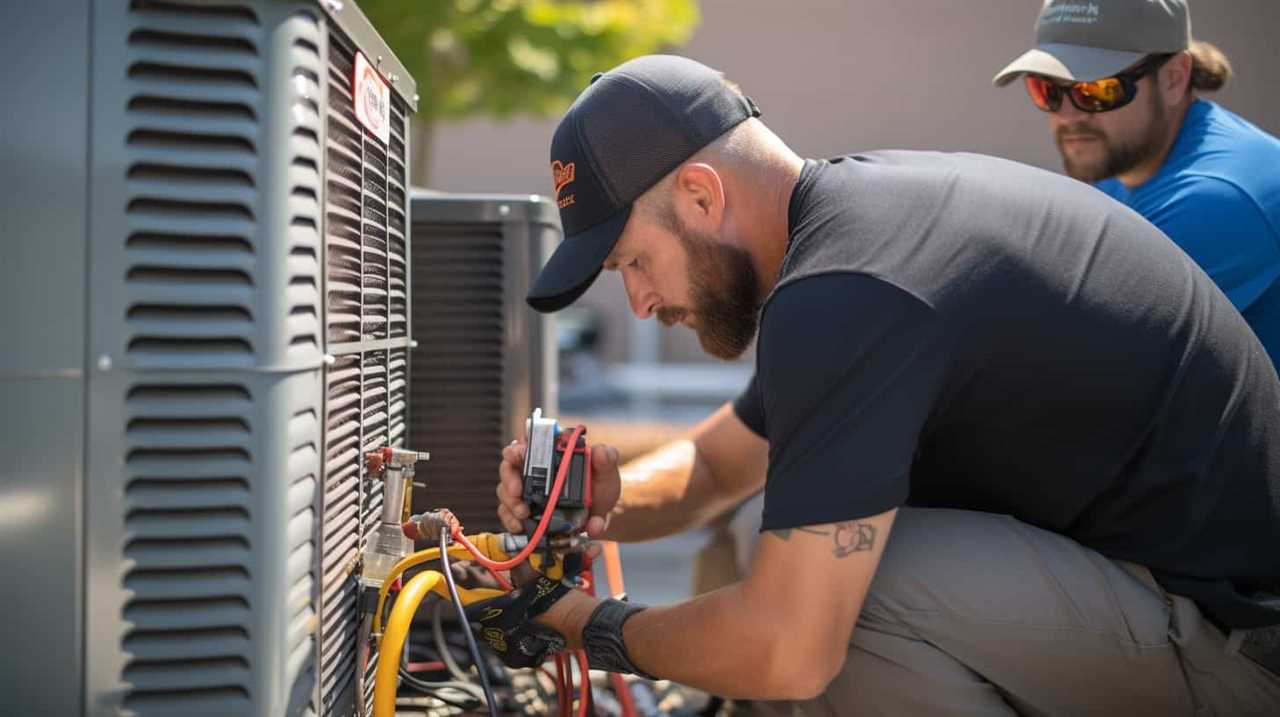
If any leaks are detected, they should be repaired immediately to prevent further damage to the system. Additionally, it’s important to follow manufacturer recommendations for the type and amount of refrigerant to be used in the heat pump.
Proper Refrigerant Level Maintenance
We regularly check and adjust the refrigerant levels to ensure proper maintenance of our heat pumps. This is crucial for their efficient operation and longevity.
Here are the essential steps we follow for proper refrigerant level maintenance:
-
Refrigerant level monitoring: We use specialized tools to measure the refrigerant levels in our heat pumps. Regular monitoring allows us to identify any deviations from the optimal levels and take prompt action.
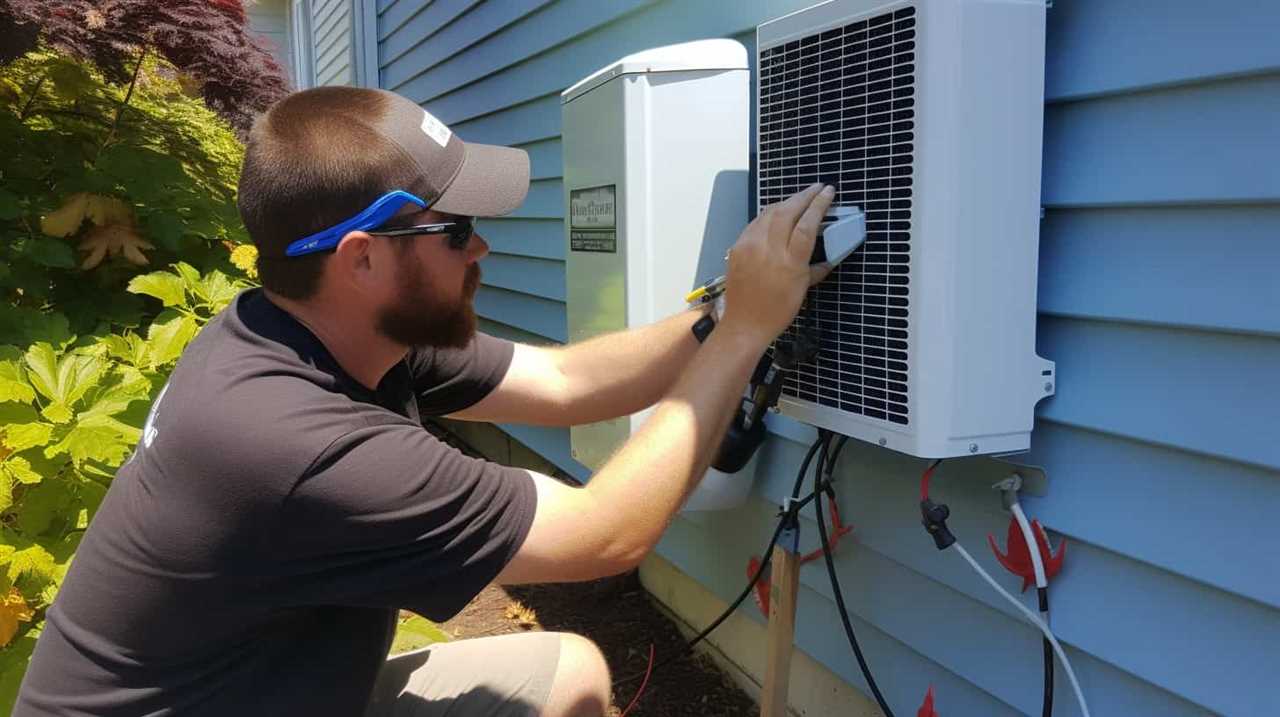
-
Leak detection: We understand the importance of detecting and fixing refrigerant leaks as they can lead to system inefficiencies and environmental harm. We employ advanced leak detection techniques, such as ultrasonic testing and electronic leak detectors, to identify and repair any leaks promptly.
-
Adjusting refrigerant levels: If necessary, we adjust the refrigerant levels to ensure they’re within the manufacturer’s recommended specifications. This helps optimize the performance and efficiency of our heat pumps.
Ensuring Proper Airflow and Ventilation
Our main priority is to optimize the airflow and ventilation in order to maximize the efficiency of the heat pump. Proper airflow management is essential for ensuring that the heat pump operates at its optimal capacity. By implementing effective ventilation techniques, we can enhance the performance of the heat pump and improve overall energy efficiency.
To achieve this, it’s crucial to regularly clean and maintain the heat pump’s air filters. Clogged filters restrict airflow, reducing the heat pump’s efficiency. By keeping the filters clean, we can ensure proper airflow and prevent unnecessary strain on the system.

Additionally, proper ventilation is essential for removing excess heat generated by the heat pump. This can be achieved by installing vents or fans to facilitate the circulation of fresh air. By allowing for the efficient exchange of air, we can prevent heat buildup and maintain the heat pump’s optimal operating temperature.
Lubricating Moving Parts and Motors
Regularly lubricating the moving parts and motors is essential for ensuring optimal performance and longevity of the heat pump system. Proper lubricant usage and motor maintenance are crucial for the efficient operation of the heat pump. Here are three key considerations for lubricating moving parts and motors:
- Choose the right lubricant:
- Selecting the appropriate lubricant is vital to ensure smooth and efficient operation of the heat pump system.
- Consider factors such as viscosity, temperature range, and compatibility with the system components.
- Follow manufacturer guidelines:
- Refer to the heat pump manufacturer’s recommendations for lubricant usage and maintenance procedures.
- Adhering to these guidelines will help maintain the system’s efficiency and prevent premature wear and tear.
- Regular maintenance schedule:
- Establish a routine maintenance schedule to lubricate the moving parts and motors.
- This will help prevent friction and reduce the risk of overheating, ensuring the heat pump operates at its optimal performance level.
Testing and Calibrating Thermostat Settings
To ensure accurate temperature control, we should regularly test and calibrate the thermostat settings of our heat pump system. Proper thermostat calibration is crucial for maintaining optimal performance and energy efficiency.
Start by checking the accuracy of the thermostat using a calibrated thermometer. Compare the displayed temperature with the actual room temperature to determine if any adjustments are needed. If the thermostat isn’t accurate, consult the manufacturer’s manual for instructions on how to recalibrate it.

It’s also important to consider the location of the thermostat. Ensure it isn’t exposed to direct sunlight, drafts, or other sources of heat or cold that could affect its readings.
Seeking Professional Assistance for Complex Issues
When facing complex issues with our heat pump system, it’s advisable to seek professional assistance. While some minor problems can be resolved by homeowners themselves, more intricate issues require the expertise of a professional troubleshooter.
Here are three common issues that may necessitate professional assistance:
-
Refrigerant Leak Detection and Repair: A refrigerant leak can significantly impact the performance of your heat pump. Professional technicians have the tools and knowledge to identify and fix leaks, ensuring optimal system efficiency.

-
Electrical Malfunctions: Heat pumps rely on intricate electrical systems to function properly. If you encounter electrical issues such as blown fuses or faulty wiring, it’s best to leave the troubleshooting and repair to a professional to avoid any safety risks.
-
Complex System Repairs: In some cases, heat pump problems may be caused by more complex issues like compressor malfunction or refrigerant flow restrictions. These require specialized knowledge and tools that only professionals possess.
Frequently Asked Questions
How Much Does It Cost to Install a Renewable Energy Heat Pump?
Installing a renewable energy heat pump can have various costs depending on factors like size and complexity. However, government incentives can help offset installation expenses, making it a cost-effective and sustainable choice for innovation.
What Are the Environmental Benefits of Using a Renewable Energy Heat Pump?
Using a renewable energy heat pump provides significant environmental benefits. It reduces carbon emissions, improves air quality, and conserves energy. Additionally, it offers substantial energy savings by utilizing renewable sources to heat and cool your home.
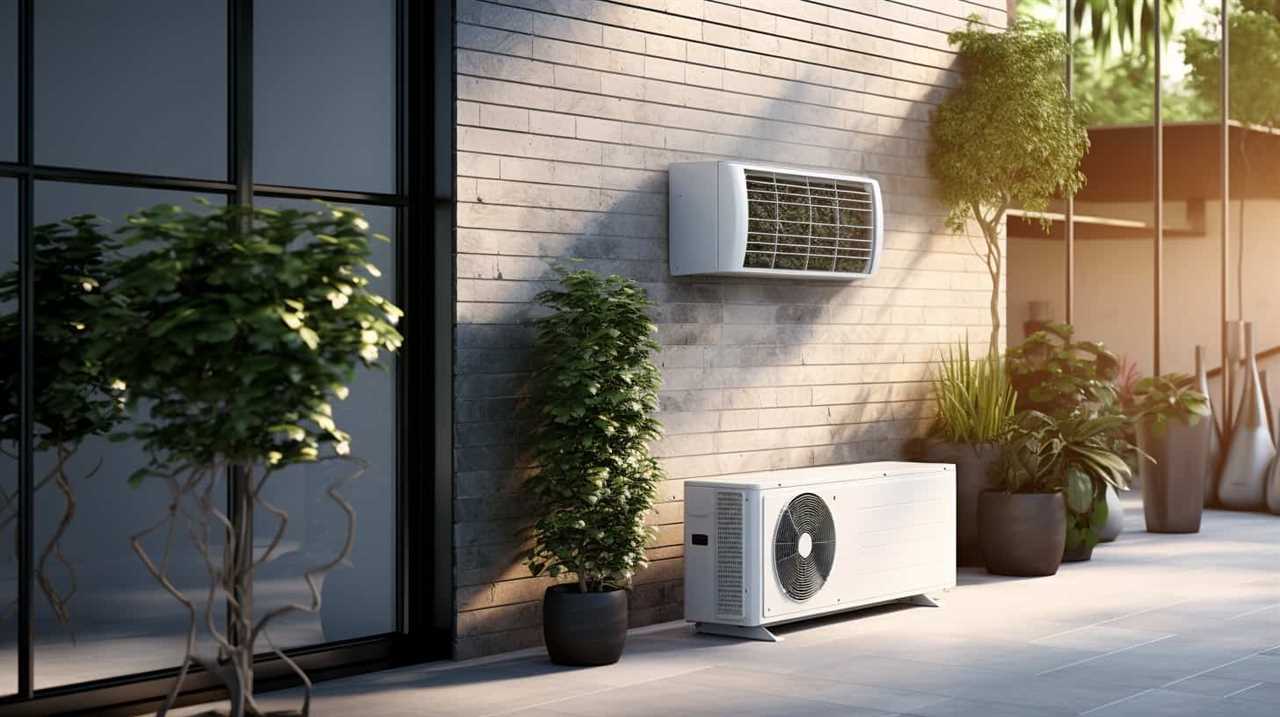
Is It Possible to Retrofit an Existing HVAC System With a Renewable Energy Heat Pump?
Yes, it’s possible to retrofit an existing HVAC system with a renewable energy heat pump. The benefits include reduced energy consumption, lower utility bills, and eligibility for renewable energy incentives.
Can a Renewable Energy Heat Pump Be Used in Cold Climates?
Yes, a renewable energy heat pump can be used in cold climates, but its efficiency may be limited. In extreme cold, the pump’s performance decreases. However, with proper maintenance, the pump can still provide heating.
How Long Does a Renewable Energy Heat Pump Typically Last?
Renewable energy heat pumps typically last an average lifespan of 15-20 years with proper maintenance. Regular upkeep, including filter cleaning, refrigerant checks, and electrical inspections, is essential for optimal performance and longevity.
Conclusion
In conclusion, maintaining renewable energy heat pumps is like tending to a delicate symphony.
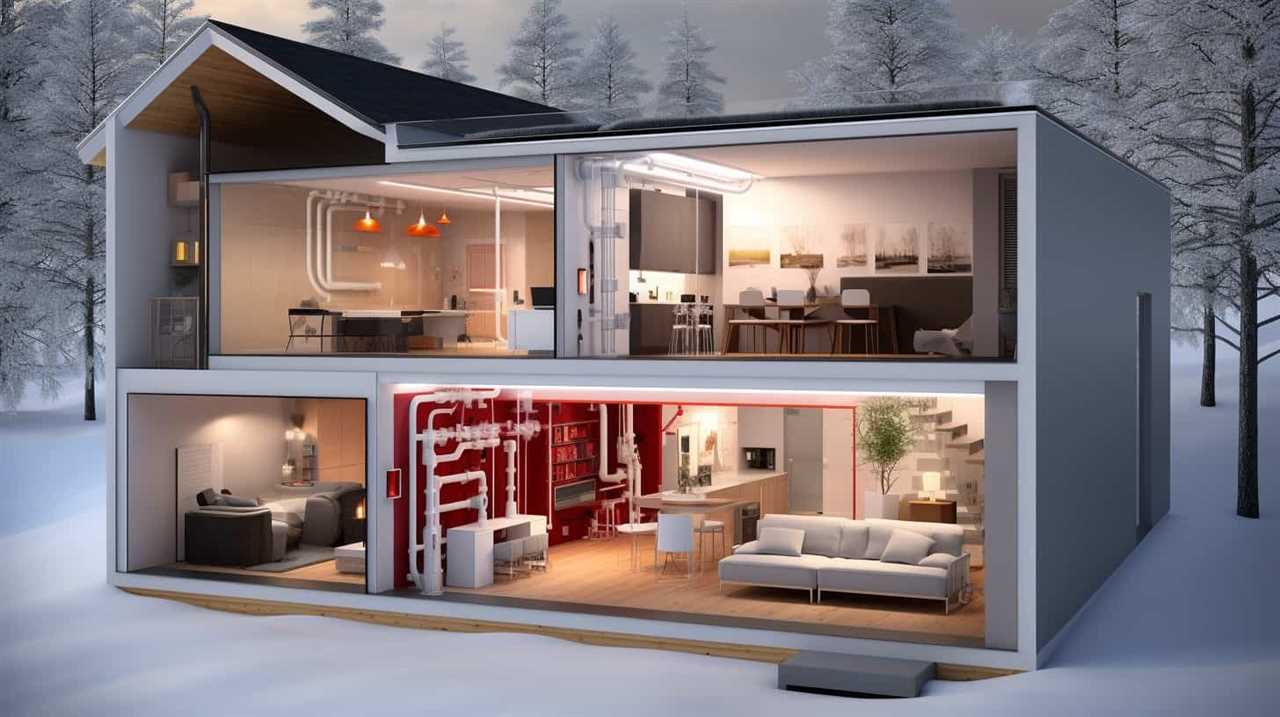
Each step, from regular inspections to adjusting refrigerant levels, plays a crucial role in ensuring their smooth performance.
Just as a conductor meticulously fine-tunes every instrument, we must diligently clean, lubricate, and test these pumps to keep them harmoniously producing clean, efficient heat.
And when faced with complex issues, seeking professional assistance is like calling upon a virtuoso to expertly resolve any challenges that arise.


